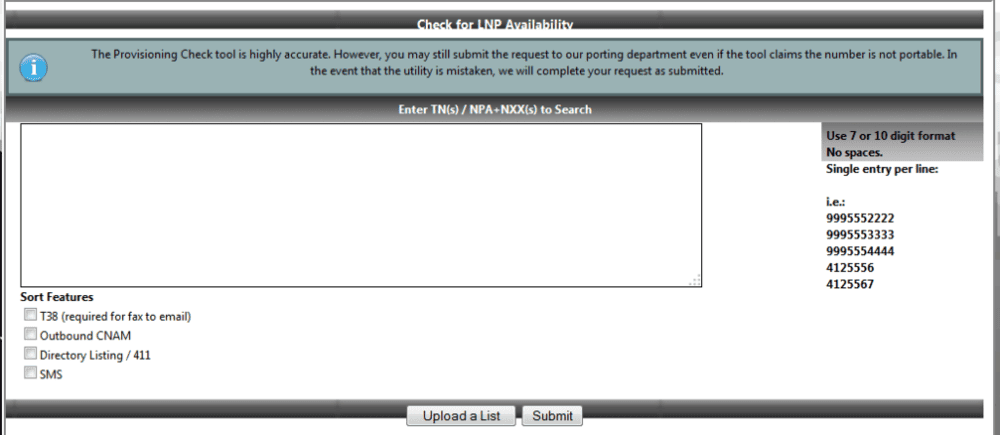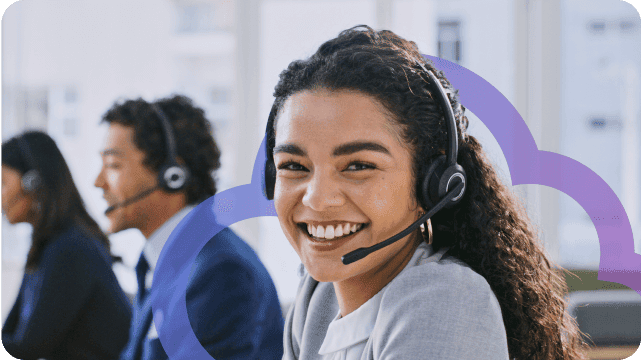How to Port a Telephone Number

In this article, let’s discuss how to transfer or port a telephone number. Let’s begin by defining what exactly we mean by that. Number porting, also referred to as LNP (local number portability), refers to the ability of a “customer of record” (fancy term for the end user) of an existing fixed-line or mobile telephone number to reassign the number to another provider. This is often referred to as “Service Provider Portability”. In most cases, there are limitations to transferability with regards to geography, service area coverage, and technology. To port a number successfully, you will want to have 3-key elements covered; pre-port preparation, in-progress port management, and post-port configuration and testing.
Pre-Port Preparation
Pre-port preparation is simply gathering information, completing forms, and then submitting the request. The first task you should do is check with your new provider to see if your number is even portable to them. Here at Sangoma, we have a simple tool that allows carrier services customers to test their number for portability. If your new provider does not offer a tool similar to this, we would recommend getting confirmation from someone in their porting department before you proceed any further.

If you are able to port a telephone number, the second piece of information you will need is a phone bill from your current provider. The phone bill will provide a variety of information; the services purchased, the numbers associated to this account, main account contact info, the service address (not the billing address), and the BTN (billing telephone number). The BTN is very important because it is your account identifier. It is used as a reference point to organize all your services. It also is used by your provider for billing purposes. Porting this number away will orphan all remaining numbers and services and possibly cause a service disruption. To avoid this, simply assign one of the remaining numbers as the new BTN. Finally, we recommend obtaining your CSR (customer service record) from the losing carrier (your current provider). Getting the CSR is hit or miss depending on who your current provider is. If your current provider is a CLEC (competitive local exchange) or ILEC (incumbent local exchange) carrier, you should be able to get your CSR, since they most likely obtained your number directly from the NPAC (Number Portability Administration Center) database. If your current carrier is a reseller or wholesale provider, the chances of getting your CSR are slim because the number is most likely registered to their ULC (underlying carrier), not them.
Once you have gathered all the necessary information, you can complete the winning carriers (your new provider’s) LOA (letter of authorization) and submit your port request. This LOA is what gives the winning carrier permission to request your number form the losing carrier. Most providers use a paper LOA, which needs to be completed, signed, and faxed. This archaic method leaves a greater chance of errors, so Sangoma Carrier Services developed an online LOA that allows our customers to complete, sign, and submit their LOA’s through our Titanium BackOffice. This feature provides better communications, more efficient management, and less human errors. The more accurate the LOA, the quicker the port turn around will be.
In-Progress Ports
Now that we have completed all the necessary preparation, let’s discuss the movement of in-progress ports when attempting to port a telephone number. If you have done a thorough job with pre-port preparation, then this step should be easy. Unfortunately, it rarely is. Why is that? The answer lies with the losing and winning carriers. The losing carrier doesn’t often cooperate with the winning carrier since they are losing your business. On the flip side, the winning carrier can fail to properly manage your port request. When you make the business and financial decision to port a number to a new carrier, it has to be the right decision; there are no second chances. Choose the wrong carrier and your customer will feel the pain. Choose the right carrier, and you will greatly reduce the chances for errors and have a seamless port.
The Titanium BackOffice has an entire section dedicated to number porting. We take number porting seriously and have automated most number porting functions to improve throughput and reduce errors. The number one item the winning carrier needs to excel at when porting a number is communication. Having access to a LNP system that allows you to manage each number port is critical. Let’s admit, there is a lot on the line, no pun intended. It is a must to have access to your port status; submitted, Jeopardy, FOC, completed ports and KPI’s (key performance indicators).

Once you have initiated your number port by submitting your LOA to the winning carrier, the next step is to wait for a response from your new carrier. Your request could have three outcomes; FOC’s (firm order commitment), Jeopardy, or cancelled. If we did our preparation correctly, we should receive a FOC date and we will be able to port a telephone number in only a few more steps. The FOC date is simply the date at which the losing carrier agrees to release the number and the winning carrier agrees to pick-up the number. If you receive a jeopardy notification, this means your port request was rejected because of incorrect information. There are many different types of jeopardy codes, click here to see a list of the most common codes. Receiving a cancellation confirmation from the winning carrier typically indicates that they are unable to port numbers for that particular rate center or geographical location.
Post-Port Configuration and Testing

Once you have received a FOC date and the number has ported, the post-port testing can begin. The actual port should be transparent to your end user, with the only difference being the behind the scenes routing. Instead of calls routing over the losing carrier’s network, calls will now be routed over the winning carrier’s network. Though it’s progress, this doesn’t mean that you are out of the woods yet. The new service needs to be thoroughly tested for unwanted technical issues and non-provisioned features. We recommend testing these items; outbound and inbound calls, sending and receiving faxes (if the number is fax capable), sending and receiving SMS/text message (if the number is SMS capable), CNAM/caller ID, E911, and 411 directory assistance. Once these items have been tested, you have successfully ported a telephone number.
As we mentioned before, we take porting very seriously and have an entire section in our BackOffice dedicated to it. After your configuration and testing is complete you’ll be able to see your porting metrics in our Porting Overview Dashboard.
In summary, to port a telephone number you are simply moving/transferring a telephone number from an existing (losing) carrier to a new (winning) carrier. To successfully port a number in the least amount of time and with the least amount of errors, we recommend using a three step process; pre-port preparation, in-progress port management, and post-port configuration and testing. We have mentioned in a few other whitepapers that to go fast you have to go slow, and this is yet another example. Trying to rush a number port through the process can and will cause mistakes and errors. It will ultimately lead to a longer process and a bigger hassle for you and your company.
Interested in Learning More?
Click here to read more carrier services articles!
Or if you’re just ready to talk to a real person by phone or email, simply fill out a contact request, sit back, and the carrier services team will reach out to you!




